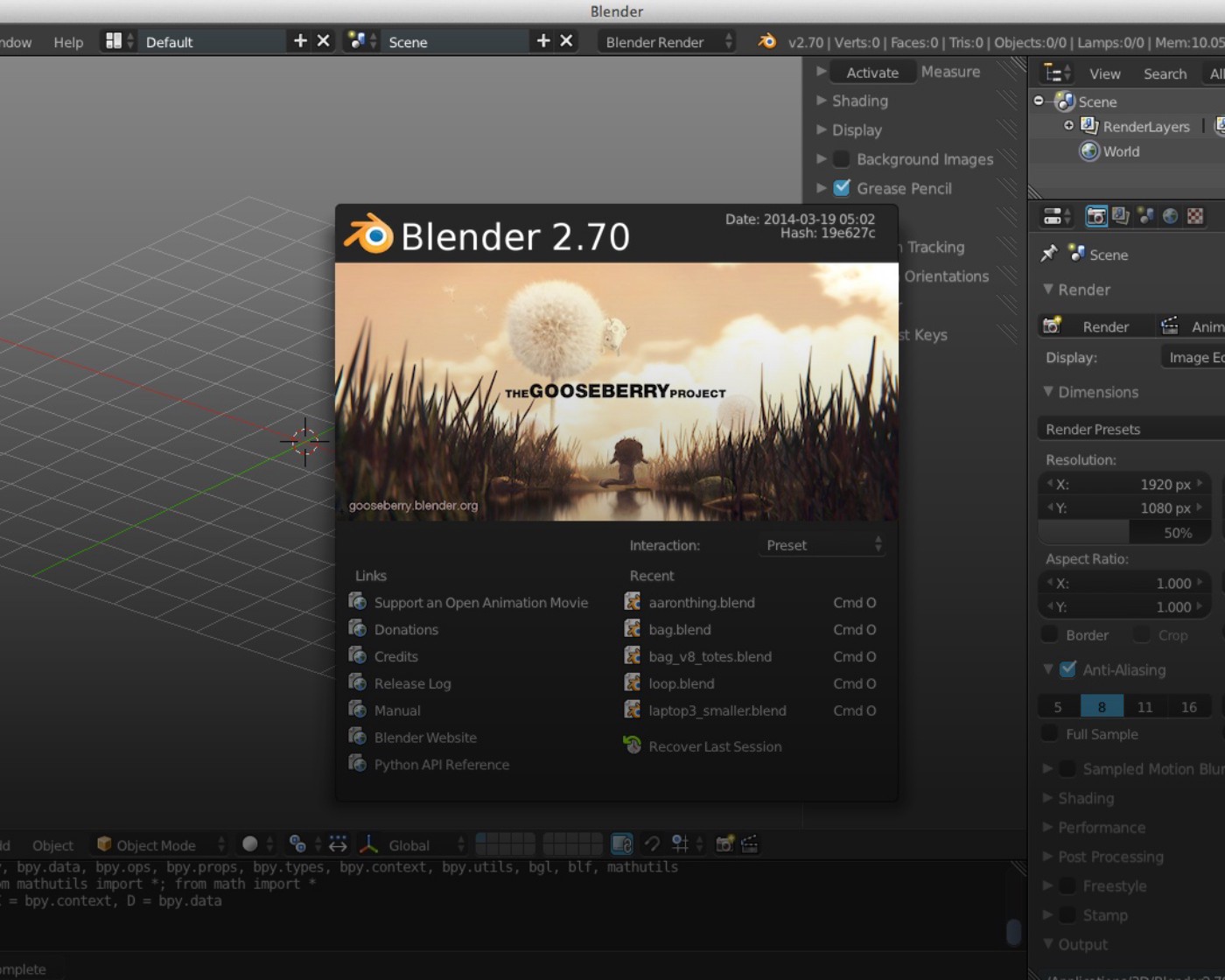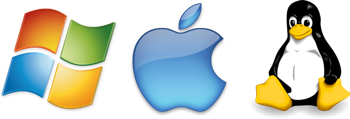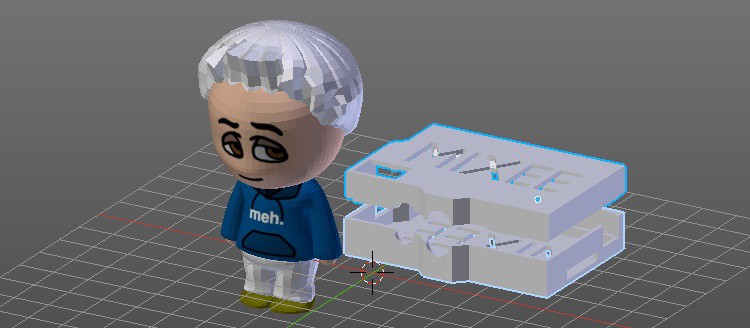Why I Use and Recommend Blender

When I need to model a 3d part or work with another designer’s files, I almost always turn to Blender. I use it in my spare time to design 3d printed household parts. I use it at work when working with more organic designs and jewelry products for MixeeLabs. If you just want to simply extrude a logo or image, there are other tools. But if you want to model more complex shapes, I recommend checking out Blender.
Blender may seem like an odd choice because it isn’t really built around product design or 3d printing. Its main use case is for 3d animation. However, I’ve used many different packages, and I always go back to Blender.
Now, I am not a professional 3d modeler. I’ve worked with 3d printing since 2010, and learned a lot about 3d modeling as a result. Blender has often been criticized as not being easy to learn, but based on my own experience starting from scratch, I think it’s actually a very manageable modeling package.
Blender is free and works across platforms

People with different budgets and different operating systems often ask me to recommend modeling software. I want to recommend something that will work with their operating system, and operates in their price range.
This flexibility and cross compatibility also makes it easy for me to work with different designers, because Blender is able to import and export basically all the different file types. We developed the Mixee Labs plugin for Blender because it doesn’t require designers to switch operating systems to run our software, or shell out thousands of dollars for new modeling software.
Last, it is one of the few modeling programs that work (well) on Macs. Some of the most popular packages (e.g. SolidWorks) are only available for Windows. Others provide only buggy versions for Macs. Blender works just as well on my Mac as it did on my old Windows machine—I can’t say the same about Excel.
Spacebar Search
Blender is chock-full of features, which are powerful but can be overwhelming for beginners. This is a common criticism for why Blender is not beginner friendly. The Spacebar Search is an elegant way to make features more accessible without reducing the feature set for advanced users.
You press the spacebar and search for features by name. This is perfect for when I can’t remember the hotkeys or what feature is on which toolbar. As a bonus, through using the Spacebar Search, I learned the hotkeys for my most commonly used features. It ended up as a nice educational tool as well.
I use it for precision modeling, organic models, texture mapping, and sculpting

One of my favorite things about working with Blender is that I can use the software regardless of what type of modeling I need. Many packages focus on certain type of modeling—architects and jewelry designers would use very different modeling software. Blender certainly has its focuses (3d animation), but I’ve found it adaptable to all my modeling needs.
Blender’s strength is in artistic/organic modeling—characters, figurines, sculptures. So, it has great mesh modeling and texture mapping tools. Many CAD packages don’t have great tools for adding textures for color 3d printing. In addition to mesh modeling, Blender also has a sculpting engine for those who modify models as one would do with clay.
As for precise mechanical parts, this is Blender’s weakest area, but it is good enough for me. I can measure distance and wall thickness. I can resize parts to specific measurements (albeit sometimes there’s a little addition and subtraction involved). For me, the bottleneck is more on 3d printers’ ability to print with accuracy than in the model file’s accuracy.
(Rudimentary) 3D Printing Tools
When modeling, there’s the Ruler/Protractor Tool to help you measure wall thickness. This is important when you are optimizing for both cost, time, and structural strength.
There’s also a 3d Printing Toolbox—an addon that calculates volume, surface area, and overhangs. This is necessary for estimating cost and print-time.
That said, my Blender files often need little fixes before sending them to the printer. However, there are programs like MeshLab and NetFabb that help fix your files. Also, if you use a service like Shapeways, they will fix your files automatically before it goes to print.
Active community, fast development

Blender has an amazing and active community. This means there are lots of people to help troubleshoot, write tutorials, and develop new features. This is one of the first things I look for. In lieu of corporate support hotlines and dedicated support teams, strong communities help you navigate the ins and outs.
This doesn’t just apply to features—the UI is improving as well. Blender gets a lot of slack for having a bad UI. Blender 2.5 (IMO) greatly improved on the UI, and now there’s even a dedicated team to further refine the UI.
Nothing is perfect, Blender is no exception
Of course, I always want more.
I would love better tools for parametric modeling. I would also love integration with fast slicers and OctoPrint.
I would love to aggregate all the tools I most commonly use into one toolbar (with nice icons) and then hide the other parts of the UI I don’t use. Yes, I know you can do this with Python scripting… but… Python scripting.
Currently, it is the best package out there for my needs. If you are interested in getting started, I highly recommend BlenderCookie’s Getting Started Tutorial Series. It’s a six-part series that goes from how to download Blender, to making your first animation.